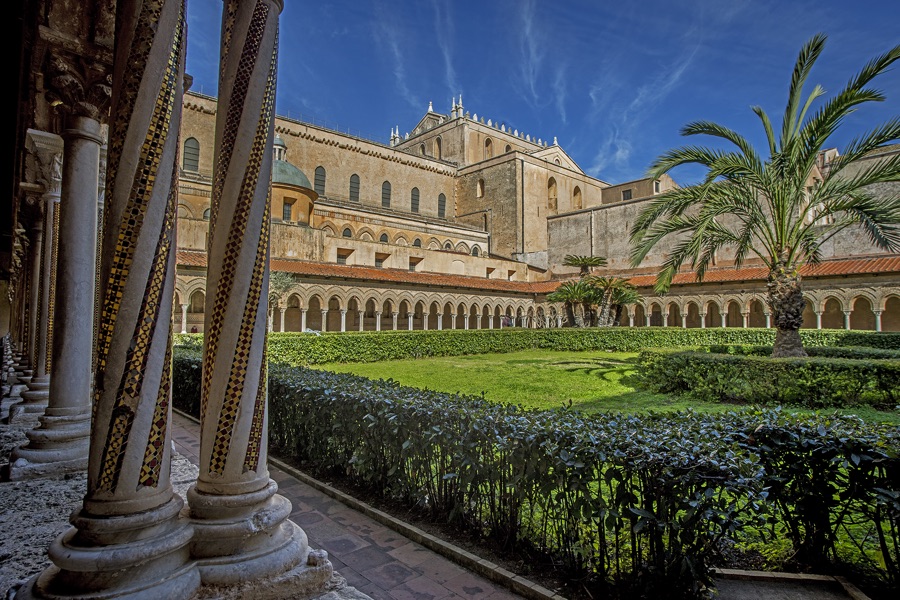The Benedictine order was founded around 529, in the monastery of Montecassino, by St Benedict of Norcia. The Rule, which proposed a communal life according to the principle of Ora et Labora, or pray and work, was drafted by St Benedict in 534 and also supported by Pope Gregory the Great. In the Middle Ages, in Sicily, the Benedictines became protagonists in the process of monastic latinisation of the island and thanks to the relationships of trust between the order and the Normans and the concessions obtained, the monks were able to exert a strong political influence. The Benedictines owned large territories in the Palermo area and enjoyed social prestige and considerable economic privileges, such as the right to tithe on certain areas. The Benedictine Monastery of Monreale, at the behest of William II, became a point of ecclesiastical reference for the entire Sicilian territory, so the king decided to grant it to the Benedictines who arrived from Cava dei Tirreni. The entire abbey complex revolves and develops around the cloister, the space where the various areas of community life were separated, and the place of contemplation where the ‘Story of Salvation’ was artistically represented in the sculptures on the capitals or in the wall frescoes.